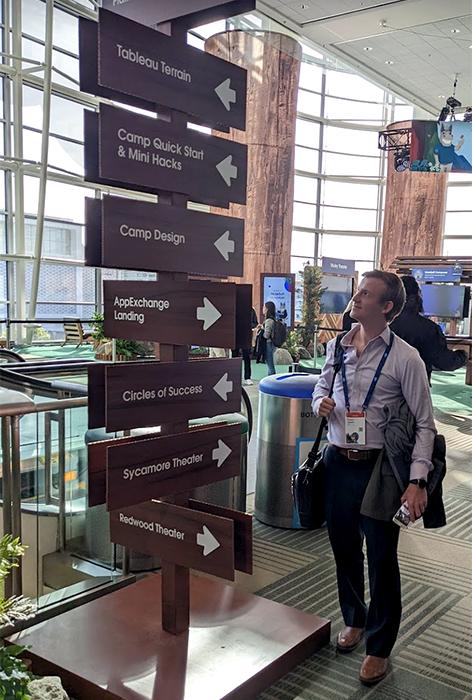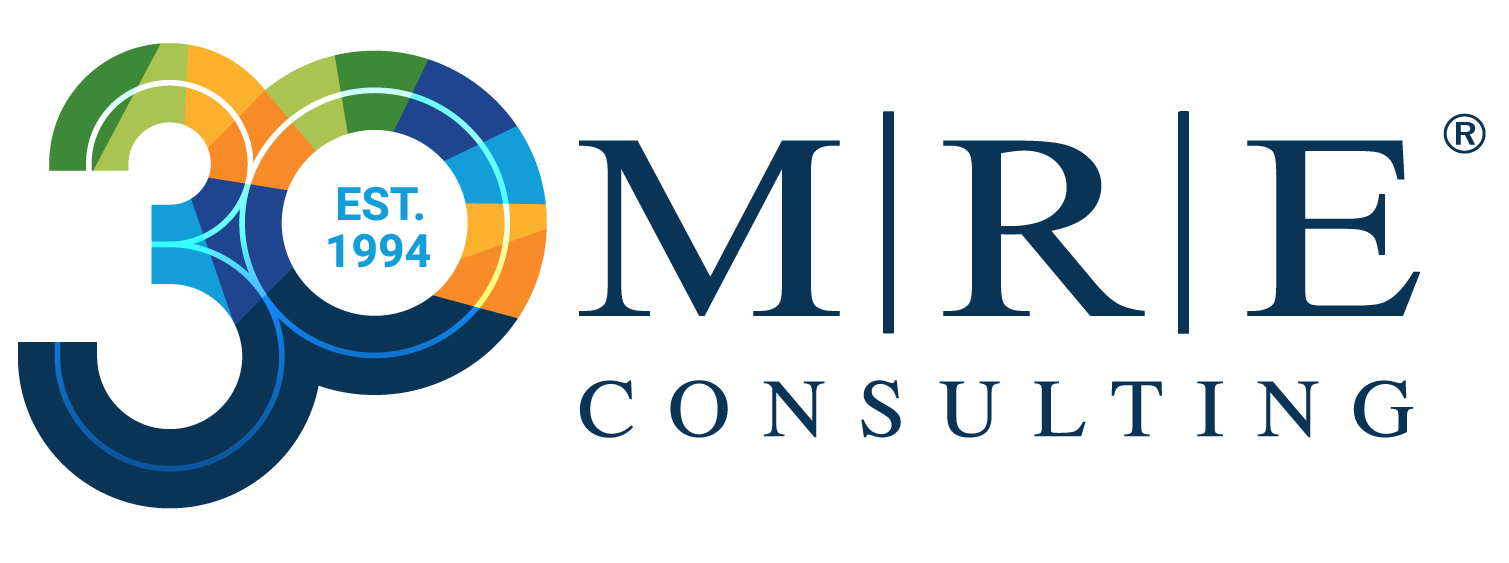May 2, 2022
By Subi Philip & Keegan Klauke

We attended the wildly popular TrailblazerDX conference in San Francisco last week! Here are our key takeaways from the amazing keynotes and the breakout sessions we attended.
For those who are unfamiliar with the event, TrailblazerDX is an event tailored to Developers, Admins and others who are passionate about innovating on the Salesforce platform. This year’s conference had a strong theme around interoperability among Salesforce, MuleSoft, Tableau, and Slack.
New Features:
Salesforce demonstrated a lot of new features that will allow developers to create integrated processes across these systems.
- Salesforce Flow components that integrate with Slack, MuleSoft, Tableau, and Einstein AI.
- The ability to execute Lightning Flows from Slack.
- The ability to execute Flow actions from Tableau.
- RPA functionality enabled through Flow Components.
- A unified IDE, Code builder, for development across Salesforce, MuleSoft and eventually all the clouds.
- Anypoint Code Builder was announced and allows Muleys (MuleSoft Developers) to create APIs, flows/integrations using a browser-based IDE (Slowly replacing Anypoint Studio)
- An APEX SDK for Slack custom development

New Announcements:
Salesforce also made several important announcements to improve development and provide new tools to implement creative solutions to support enterprise scale.

- Salesforce DevOps Center – Similar to Azure DevOps, GearSet, and Jenkins, this tool allows release managers to create pipelines enabling a native CI/CD process to migrate changes across Orgs. It links to Github repos, branches, and approval processes.
- Salesforce Elastic Cloud Vision – The goal of elastic cloud is to provide the ability to use scalable infrastructure removing the limitations of Governor Limits. Currently Salesforce Functions is a features that supports elastic compute, which moves complex code to an auto-scaling environment the customer controls using Heroku. Salesforce functions can be build/developed using Node.Js, Java, PHP and other open-source languages.
- Hyperforce – While still limited to a few regions/customers, Hyperforce will allow customers to deploy the core Salesforce clouds to AWS (and eventually Azure) regions and environments for greater control over processing resources and data, which support GDPR and GXP.
Takeaways:
- Lightning Web Runtime – creating a self-contained Lightning Web Component that can be embedded in other Web Platforms (outside of salesforce!). The example they built was a Lightning Web Component that they embedded in a Quip Document!!!
- Going All In on Event Driven Architecture – You may be familiar with Platform Events (For Salesforce Cloud) or Lightning Message Channels (For LWC’s) or Mulesoft’s MuleESB. Now they announced a salesforce connector called “Event Relay” to AWS’s EventBridge. So now you can leverage the event driven architecture between SF and AWS by relaying events across the two platforms. I also attended a session on integrating a Redux Store architecture for managing LWC’s communications across a SF page. This is slightly redundant functionality to a Lightning Message Channel, but this Redux package could handle web elements in other major languages like React or Angular, so the architecture is helpful to manage more complex Webpages (Salesforce actually uses the Redux Store architecture to manage their Einstein prediction pages!)
- Slack will eventually replace Chatter – They have some kinks to work out between the two systems and how to effectively synchronize them. The biggest hurdle they have to overcome is finding the best way to address the “communications on a single record” that Chatter is best known for. this could be a long time, but good to understand the direction.
Salesforce Classic will be deprecated eventually – Not that we didn’t already know that was the direction, but they continued to say at some time they will start that clock, but it would be a 2–3-year phase out process. - Replay Debugger: Checkpoints – You may be familiar with the “Breakpoint” concept on a test class Replay Debugger. You may also know that your Maps and List Variables never have any values in them… So how are you supposed to know what data you are working with? Now you can use a “Checkpoint” to render all your Variables and it looks like you would expect any normal debugger in any other platform to look like and render your Lists and Maps as Arrays of values you know are there.
- Performance Assistant and Scale Center – There is a neat tool being released for Winter ’23 that you can use to look at how your environment is operating. Is there failures? how often and when does it happen? is it Apex? is it API’s? is it User interactions? When is my Org being throttled due to high load on the multi-tenant system? You also can do a lookback and comparison of performance at a previous date to check that if a recent deployment is causing new performance impacts and troubleshoot what the problem was that was introduced. you can also Schedule a time where your system will not be throttled so you can get an accurate test done on your true performance of your system.
- Salesforce AI: CodeGen and ApexGuru – This is a little Skynet like, and the code is out on GitHub. Essentially you write phrases of what you want your code to do, like “get a list of Opportunities and for each of them assign a value of one more than the previous and divide it by 2” and it will build the Apex code block for you. It can also help with filling out some of code to make it more performant or offer comments that explains what the code you are writing does, to support better readability.
- Amazon DynamoDB and Salesforce – Salesforce will have a Connector that will connect DynamoDB with Salesforce using the External Data Sources section of the Admin Setup. This will allow data from DynamoDB to be pulled into Salesforce and rendered as a unique Object/Field that looks no different than salesforce’s native Objects/Fields.
During the event, we got to make lots of new connections with some really great developers who are truly passionate about code and innovation and gained a broader perspective to bring back to the team around the Salesforce roadmap and ecosystem from different backgrounds and viewpoints (Education, Government Support, Financial services, Healthcare, etc.).
If you have any questions or want to learn more, drop us a note below!














